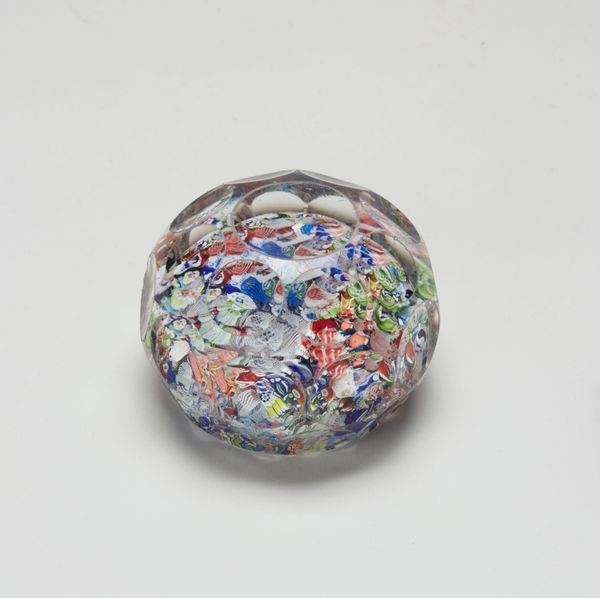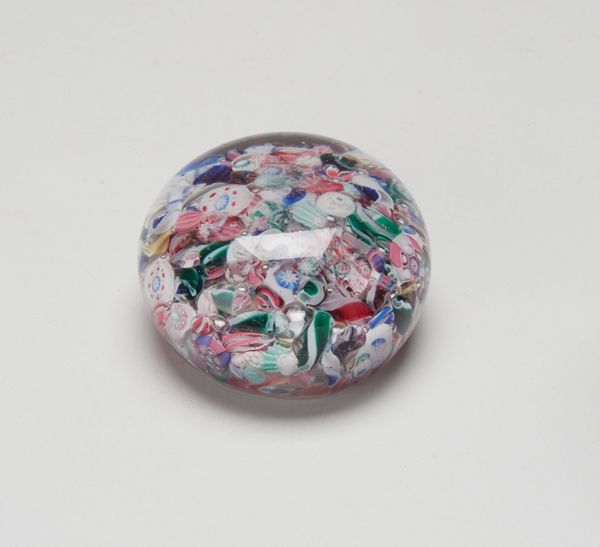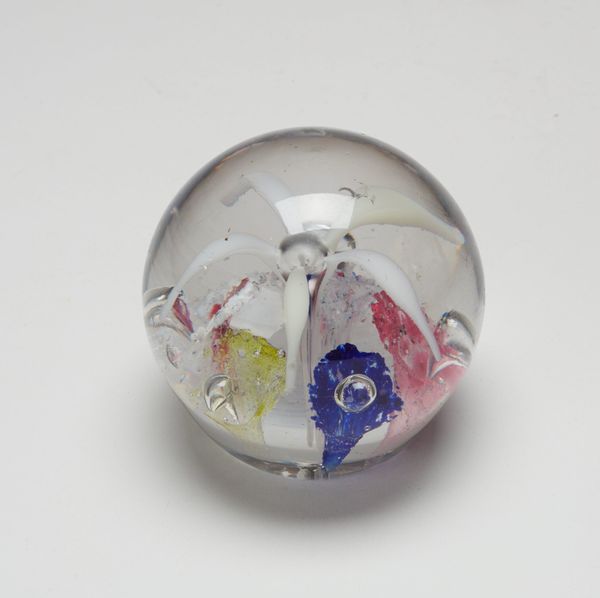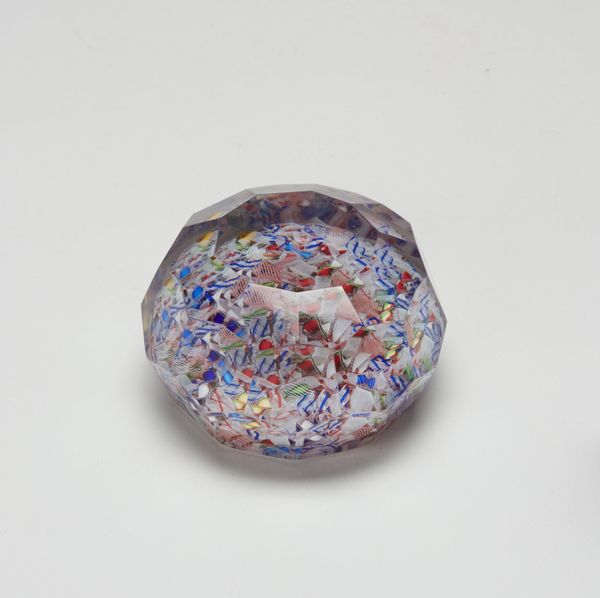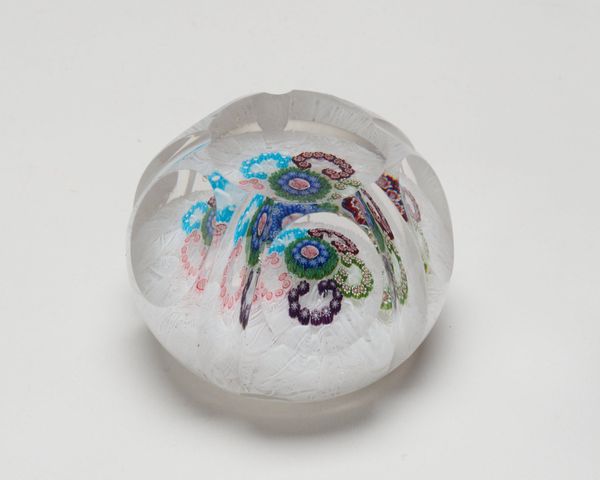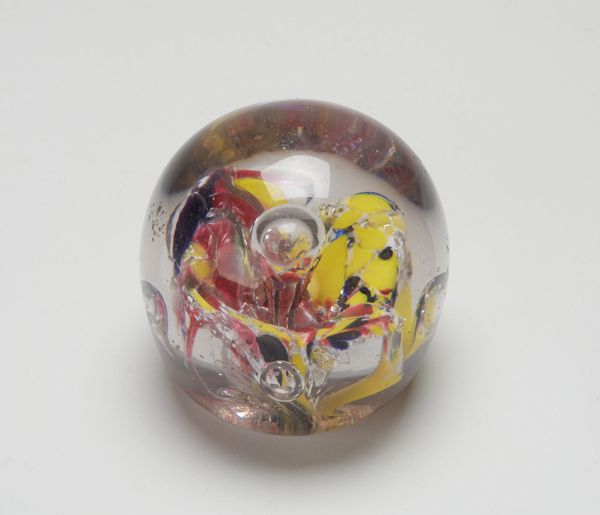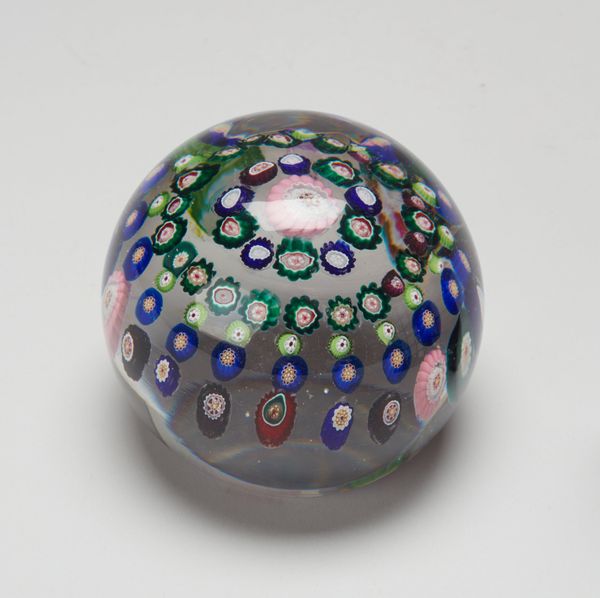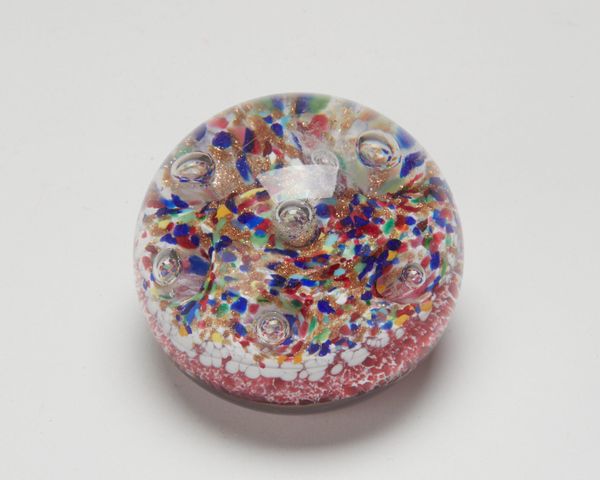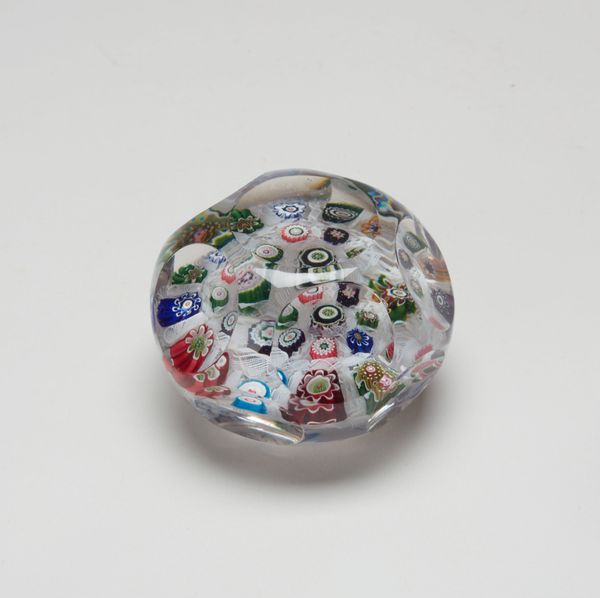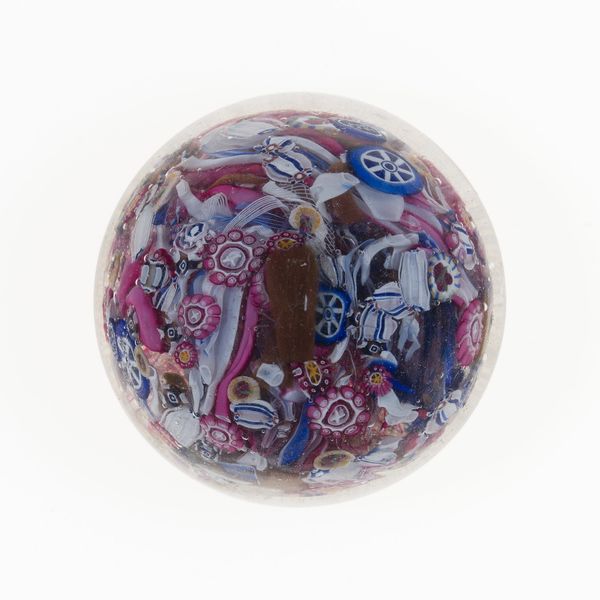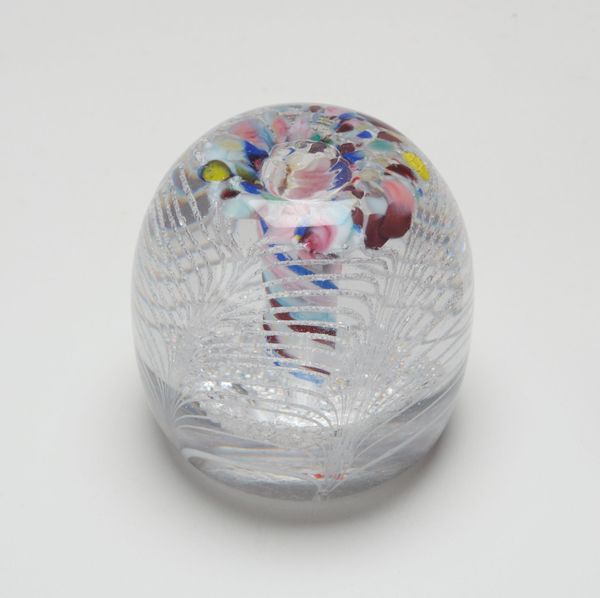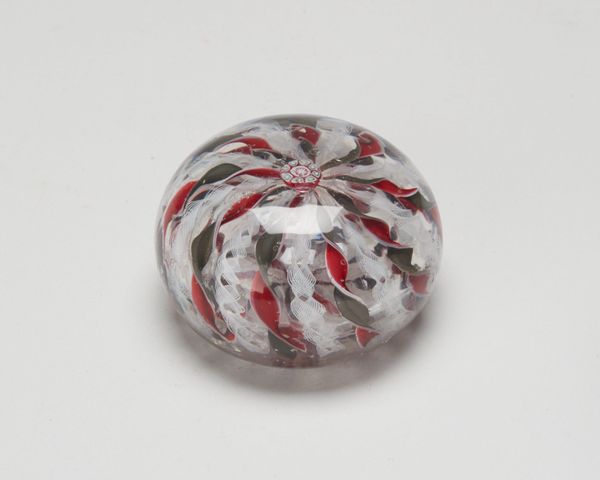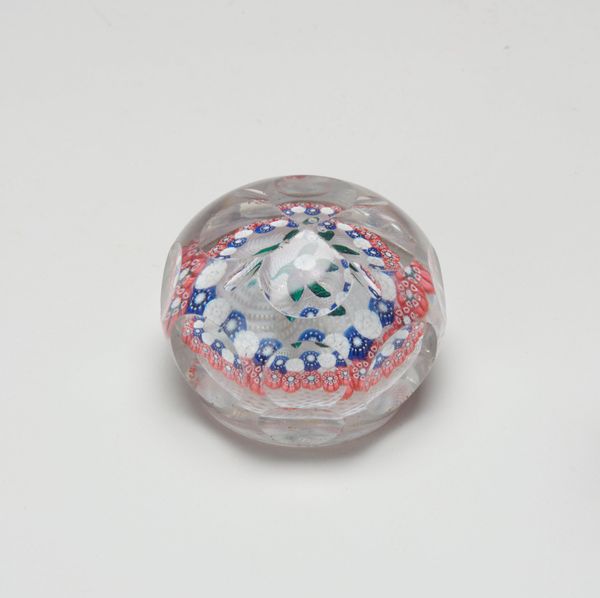
glass, sculpture
#
glass
#
sculpture
#
romanticism
#
decorative-art
Dimensions: 1 7/8 x 2 1/2 x 2 1/2 in. (4.76 x 6.35 x 6.35 cm)
Copyright: Public Domain
This paperweight was made by the New England Glass Company sometime between 1818 and 1888. It encapsulates complex social and economic histories within its simple form. Paperweights like these were luxury objects, popular during the Victorian era, a time of massive industrial expansion and wealth accumulation, but also stark social stratification. The New England Glass Company was one of many firms producing decorative glass, catering to an expanding middle class with disposable income. Its swirling patterns are created with millefiori, an Italian glass technique meaning "thousand flowers", suggestive of global trade and artistic exchange. This seemingly modest object embodies both the opulence and the global connections of the era. To fully understand the paperweight, one could research the glass industry in 19th-century America, trade routes, and the material culture of the Victorian middle class. Approaching the study of art in this way reminds us that even the smallest object can reveal complex histories.
Comments
No comments
Be the first to comment and join the conversation on the ultimate creative platform.
